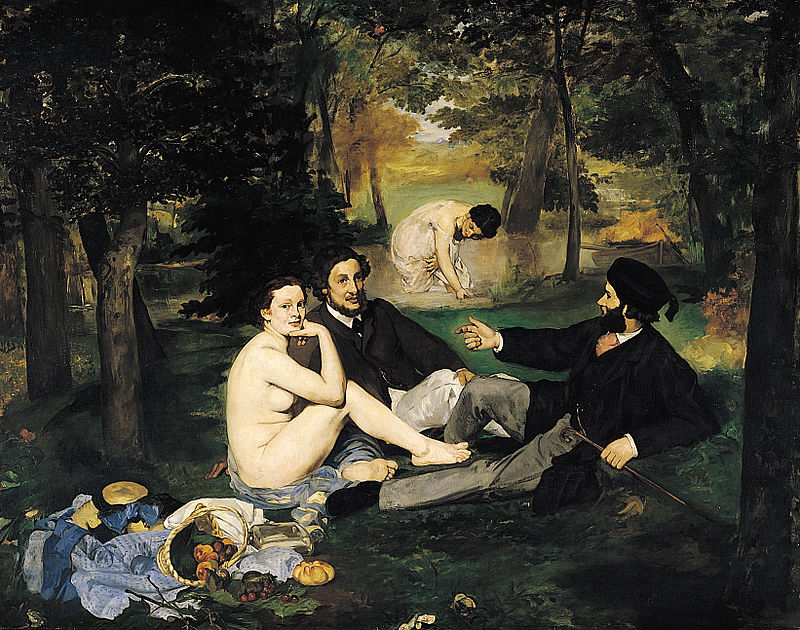In 1865, French painter Claude Monet began work on a painting, known as Luncheon on the grass, which later went down in art history. It was initially intended as a response to Édouard Manet‘s eponymous painting, which had been published two years prior.
As opposed to Manet, Monet tried to create a more realistic painting. He also aimed to make his work more suitable for everyday life, and without the provocation that lingered behind the original painting. Manet’s original work presented nudity without the support of a mythological background, which triggered a serious scandal – and that was Manet’s aim from the very beginning!
He depicted a naked woman in direct association with two clothed men. At the time, this was beyond scandalous. It was never meant to become public, but it did so when Emperor Napoleon the III gave the order that all pictures which had been dismissed by the Paris Salon should be gathered in an extra room.
Years later, numerous artists derived inspiration from Manet’s painting – including Picasso himself. Even today, Manet’s and Monet’s paintings are both seen as great artistry, each in their own way. And the fact that Monet’s version will always be incomplete makes it all the more interesting…





